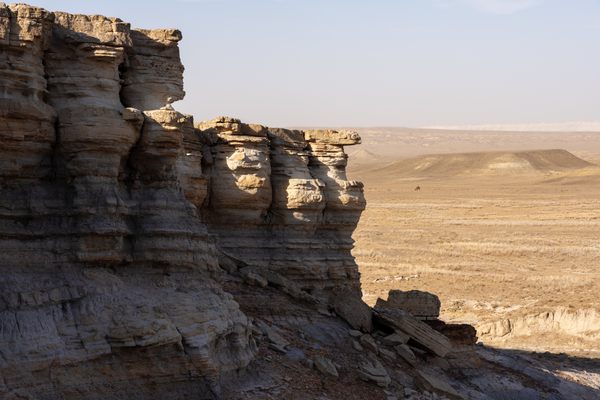The remote gorge of Kokkala dates as far back as the Jurassic era. Located in the Mangystau region of Kazakhstan, this landscape is the result of shifting tectonic plates, which hoisted layers of colorful limestone and clay sediments out into the open. The result was a prehistoric tableau with origins from a lost world.
You won’t find bones here, but the rocks are infused with ancient wood and coal deposits originating from the days of the dinosaurs. The textures of the rocks are variegated and intricate, their craggy outlines in contrast with the surrounding flat land. Round, sulfur-yellow hummocks lie at the base of the columns that encircle the gorge, their mushroom tops towering over the crumbling rock faces.
Traversing through the canyon and atop the ridges is a combination of hiking and climbing—to summit the gorge calls for a full-body navigation of a short but steep rock trail. The top of the ridge can be precarious and requires firm footing, as the narrow path is scattered with loose copper-colored rock, flanked by steep cliffs, and prone to sudden blasts of strong wind.

